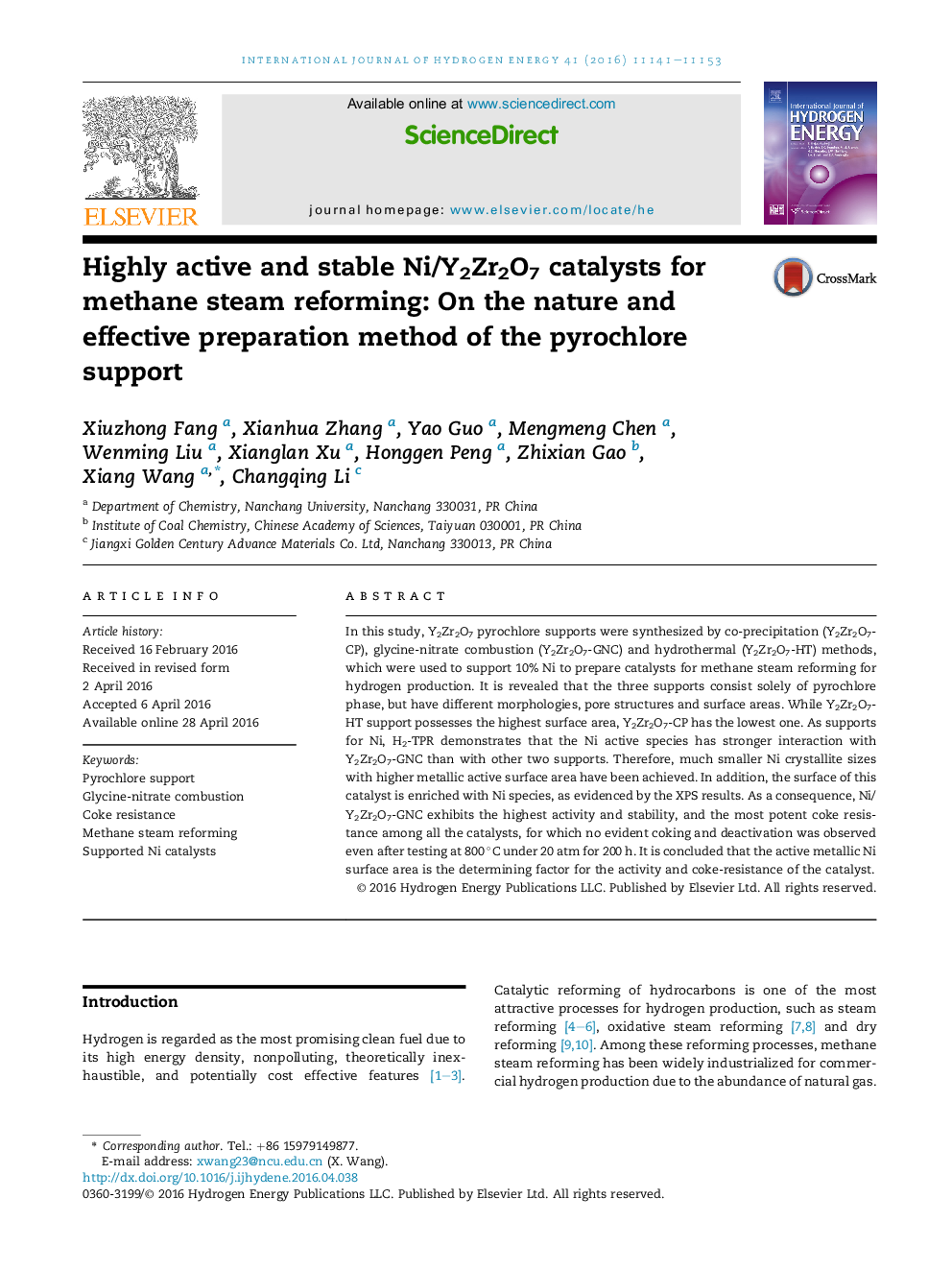| Article ID | Journal | Published Year | Pages | File Type |
|---|---|---|---|---|
| 1269548 | International Journal of Hydrogen Energy | 2016 | 13 Pages |
•Y2Zr2O7 pyrochlore supports were successfully synthesized by different methods.•Ni has stronger interaction with a support prepared by glycine-nitrate combustion.•Ni has higher active surface area and smaller crystallite size on this support.•Hence Ni/Y2Zr2O7-GNC exhibits superior activity and coke resistance.•The support structures influence the reforming performance of the catalysts.
In this study, Y2Zr2O7 pyrochlore supports were synthesized by co-precipitation (Y2Zr2O7-CP), glycine-nitrate combustion (Y2Zr2O7-GNC) and hydrothermal (Y2Zr2O7-HT) methods, which were used to support 10% Ni to prepare catalysts for methane steam reforming for hydrogen production. It is revealed that the three supports consist solely of pyrochlore phase, but have different morphologies, pore structures and surface areas. While Y2Zr2O7-HT support possesses the highest surface area, Y2Zr2O7-CP has the lowest one. As supports for Ni, H2-TPR demonstrates that the Ni active species has stronger interaction with Y2Zr2O7-GNC than with other two supports. Therefore, much smaller Ni crystallite sizes with higher metallic active surface area have been achieved. In addition, the surface of this catalyst is enriched with Ni species, as evidenced by the XPS results. As a consequence, Ni/Y2Zr2O7-GNC exhibits the highest activity and stability, and the most potent coke resistance among all the catalysts, for which no evident coking and deactivation was observed even after testing at 800 °C under 20 atm for 200 h. It is concluded that the active metallic Ni surface area is the determining factor for the activity and coke-resistance of the catalyst.
Graphical abstractFigure optionsDownload full-size imageDownload as PowerPoint slide
